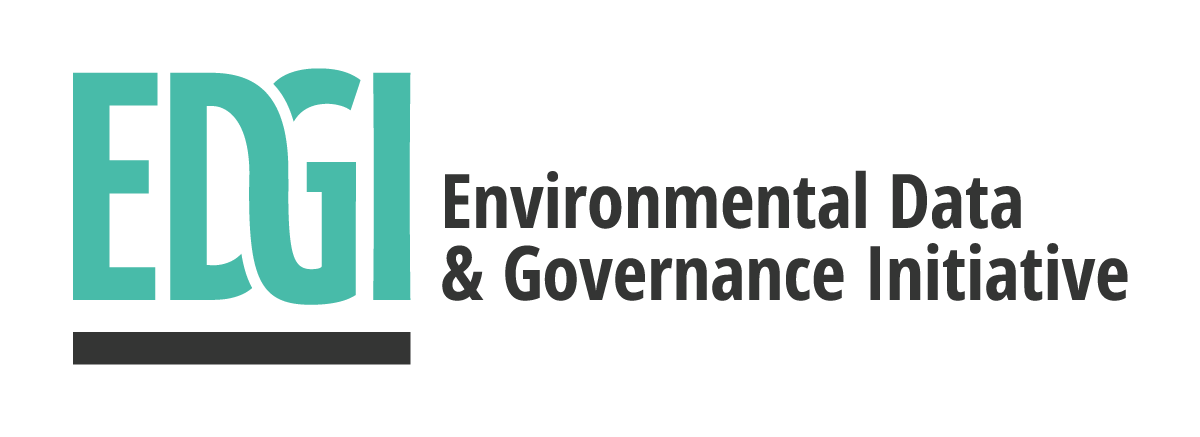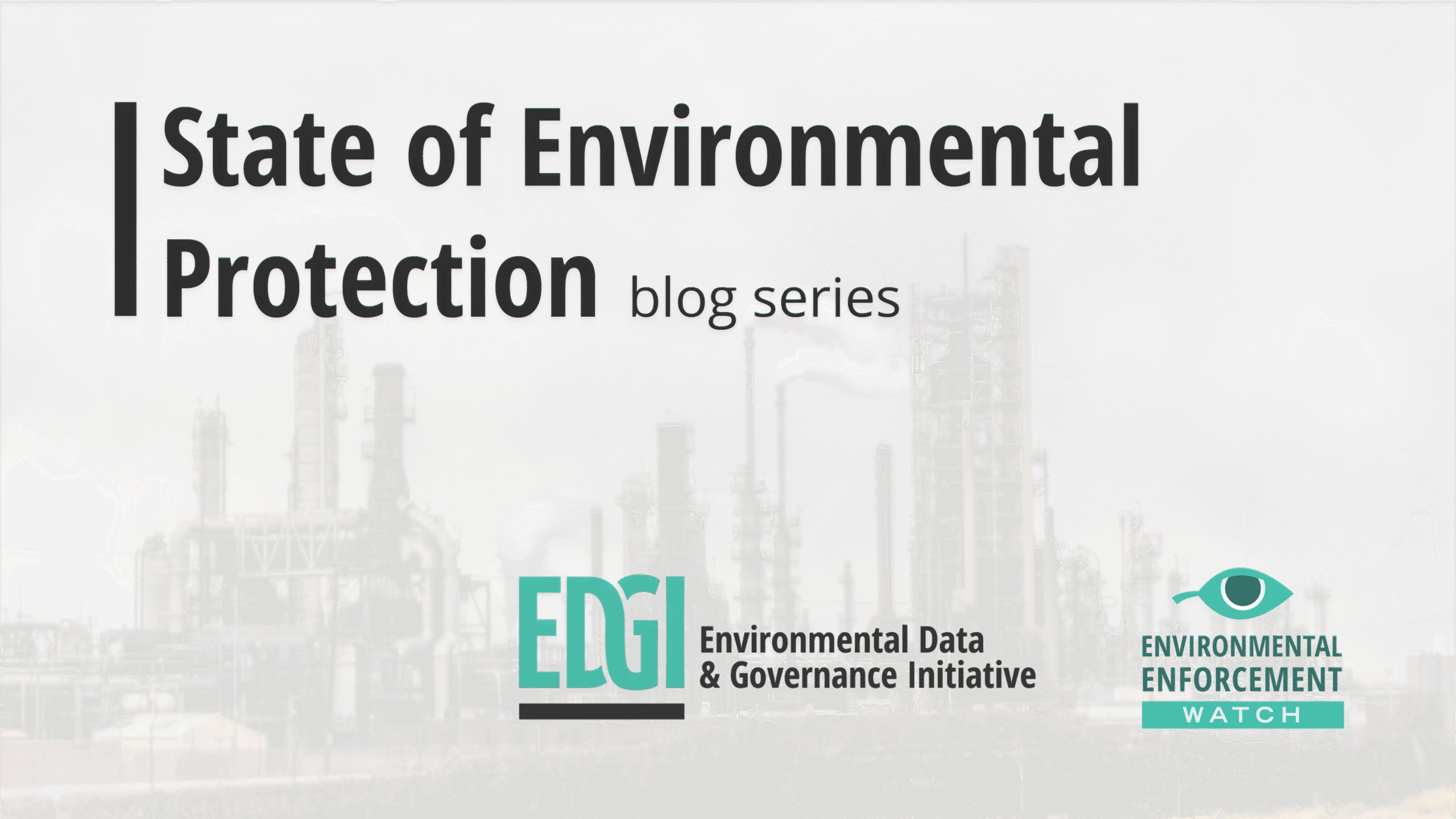By: Eric Nost, Christopher Cane, Carly Hagen, Marsella Monier, Lourdes Vera, Steve Hansen
EDGI’s Environmental Enforcement Watch project is covering the state of environmental protection in the US today through a series of blog posts. The goal of this series is to orient our current position relative to the ambitious goals of the Clean Water Act (CWA), Clean Air Act (CAA), Safe Drinking Water Act (SDWA), and Resource Conservation and Recovery Act (RCRA). What does a second Trump administration mean for the state of environmental law, compliance, and enforcement in the US?
To begin to answer these questions, we can assess the actions of the current administration, plans from right-wing groups such as the America First Policy Institute and The Heritage Foundation (“Project 2025”), and the policy actions and environmental outcomes of the first Trump administration.
The first Trump administration:
- Executed a rollback of 98 environmental rules and regulations
- Prioritized fossil fuels over renewable energy sources by:
- Supporting drilling in national forests and near national parks
- Supporting offshore drilling in almost all US waters
- Seeking to open up Arctic National Wildlife Refuge to oil and gas exploitation
- Falsely claimed that either climate change does not exist or will not have catastrophic consequences
- Pulled out of Paris Climate Agreement
Already, within its first 100 days, the second Trump administration:
- Once again withdrew from the Paris Climate Agreement
- Re-oriented EPA’s mission, in part towards expanding energy-demanding AI
- Accused EJ grants of waste and fraud, canceling them without minimal evidence
- Eliminated EJ programs, staff, and tools, such as EJScreen
- Pursued deregulatory action that would result in public and environmental health harms
- Proposed eliminating science offices such as those at NASA, NOAA, and EPA
- Developed mechanisms for exempting polluters from air pollution limits
- Did all the above through an aggressive propaganda style, treating the media as an enemy in EPA press releases
We will apply an environmental data justice perspective to the first Trump administration’s records of pollution and legal compliance. That means accounting for what these records are designed for and their limitations. Pollution records only cover some toxics under certain conditions. Enforcement and compliance records are the government’s records of what it has done to ensure industry compliance with pollution limits. They can tell us how many facility inspections agencies have done, whether a polluter has violated an environmental protection law based on its reported emission levels, and whether the polluter has been fined any penalties for doing so. These records give us some sense of whether industry follows the rules, and whether public agencies apply them, but they do not tell us much about whether those rules are sufficient for public and environmental health in the first place.
A lack of data can be used to justify inaction and make inaccurate claims to progress. Undermining datasets likewise supports right-wing agendas–we’ve already seen that under Trump 2 with wide-scale attacks on public health, demographic, and climate/environmental justice datasets. We expect more data attacks based on Project 2025 plans, including attempts to eliminate the chemicals hazards database IRIS and removing access to information about chemical facilities’ risk management plans. With less information about chemicals, and hence more uncertainties, they become harder to regulate, a win for industry. As DOGE seeks to cut across federal databases to better track individuals, public agencies are seeking to dismantle databases that help us track polluters.
As the second Trump administration launches its Project 2025 assault on federal bureaucracy, we scrutinize three of its central premises:
- “We have made significant progress in reducing pollution since foundational environmental protection laws like the Clean Air Act were established in the 1970s.” Right-wing agendas couch all of their deregulatory actions first and foremost in terms of “we’ve made enough progress, it’s time to cut the red tape that stands in competition/businesses’ way.” See, for instance, America First Policy Institute’s “THE FACTS”.
- “We should ignore race when considering environmental justice.” Pointing to a case on race-based college admissions that was to be heard by the Supreme Court, Project 2025 proposed that “allocations of agency resources, increased EPA enforcement, and/or agency distribution of grants should be based on neutral constitutional principles.” SCOTUS’s decision on the case ultimately struck down race-based admissions policies, opening the door to its use to justify ending environmental justice work at EPA (among other things). Project 2025 also called for eliminating so-called “woke” policies at EPA, eliminating the standalone EPA Office of Environmental Justice, and ending Biden’s Justice40 initiative, or at least ending the ability of community groups to be funded by it. Project 2025 also called for disrupting the Census and hence the ability to quantitatively document inequality. Almost all of these changes have been executed in just the first 100 days of the new Trump administration.
- “We can focus on compliance, not enforcement.” Project 2025 and other right-wing agendas want to give more free rein to industry (even though they already have permission to pollute). They specifically emphasize reducing enforcement efforts at EPA–hiving Office of Enforcement and Compliance Assurance off into its component parts at the Office of Water, Office of Air and Radiation, etc.–and instead ensuring compliance through other “cooperation” with state and local agencies. Already we are seeing this in the form of EPA allowing industries to request exemptions to complying with Biden-era rules on toxic air pollutant limits.
Here’s the core of our response:
- Over the past 50 years, some measures of pollution have indeed improved. Yet, the scale of pollution is still so large that there is much more work to do, especially when it comes to reducing greenhouse gases (GHG). We have not reduced carbon pollution in any meaningful way. Significant GHG reductions have come from the retirement of coal-fired power plants, something which Trump’s first administration sought to stymie; the second Trump administration is already exempting these plants from some regulations. Trump’s first administration oversaw rising emissions from exports of petroleum, something which the second Trump administration seeks more of. Moreover, we still have legacy pollution problems (i.e. Superfund sites) as well as emerging threats (ex. PFAS).
- The harms from pollution are not distributed equally. Overall improvements mask harms that may have been made worse in specific communities. Scholarship and advocacy around EJ has long demonstrated how it is driven by environmental racism. The colorblind, race-neutral approach advocated by Project 2025 and the second Trump administration perpetuates environmental racism by redirecting attention away from where it’s most needed. At times, the right-wing goes beyond “colorblind environmentalism” with fascist rhetoric specifically seeking to undermine Black, immigrant, and otherwise socially marginalized lives and resistance.
- Non-compliance is rampant and reducing enforcement capacity even further (it has been in long term decline since Obama) is unlikely to help. We know that only a handful of companies and industries are responsible. What we need is clear and enforced regulations.
In the posts that follow over the coming months, we’ll look at trends in violations of the Safe Drinking Water Act, the industries and companies responsible for the riskiest air pollution, and more. This administration will be held accountable for its environmental practice.

